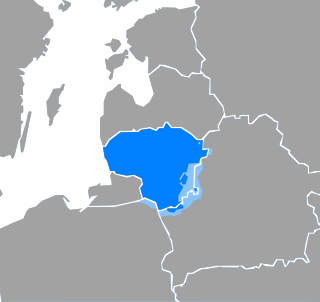
Lithuanian language
Baltic language spoken in Lithuania / From Wikipedia, the free encyclopedia
Dear Wikiwand AI, let's keep it short by simply answering these key questions:
Can you list the top facts and stats about Lithuanian language?
Summarize this article for a 10 years old
Lithuanian (lietuvių kalba [lʲɪɛˈtʊvʲuː kɐɫˈbɐ]) is an Eastern Baltic language belonging to the Baltic branch of the Indo-European language family. It is the official language of Lithuania and one of the official languages of the European Union. There are approximately 2.8 million[2] native Lithuanian speakers in Lithuania and about 1,000,000 speakers elsewhere. Around half a million inhabitants of Lithuania of non-Lithuanian background speak Lithuanian daily as a second language.
| Lithuanian | |
|---|---|
| lietuvių kalba | |
| Pronunciation | [lʲɪɛˈtʊvʲuː kɐɫˈbɐ] |
| Native to | Lithuania |
| Region | Baltic |
| Ethnicity | Lithuanians |
Native speakers | 3.0 million (2012)[1] |
Early forms | |
| Dialects | |
| Latin (Lithuanian alphabet) Lithuanian Braille | |
| Official status | |
Official language in | |
Recognised minority language in | |
| Regulated by | Commission of the Lithuanian Language |
| Language codes | |
| ISO 639-1 | lt |
| ISO 639-2 | lit |
| ISO 639-3 | Either:lit – Modern Lithuanianolt – Old Lithuanian |
| Glottolog | lith1251 |
| Linguasphere | 54-AAA-a |
 Map of areas where Lithuanian is spoken as a majority language (marked in dark blue) and minority language (marked in light blue) | |
| This article contains IPA phonetic symbols. Without proper rendering support, you may see question marks, boxes, or other symbols instead of Unicode characters. For an introductory guide on IPA symbols, see Help:IPA. | |
Lithuanian is closely related to neighbouring Latvian, though the two languages are not mutually intelligible. It is written in a Latin script. In some respects, some linguists consider it to be the most conservative of the existing Indo-European languages, retaining features of the Proto-Indo-European language that had disappeared through development from other descendant languages.[3][4][5]